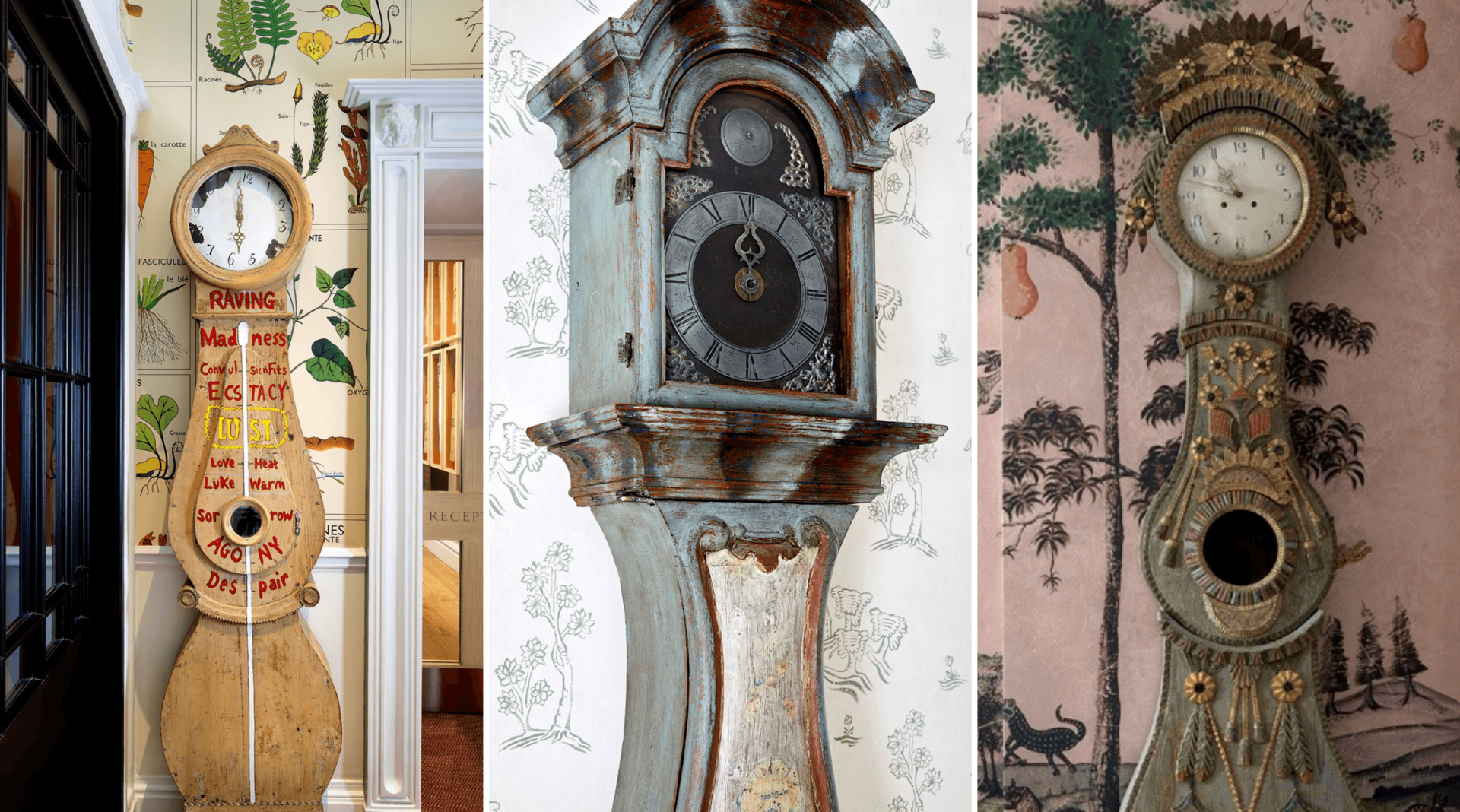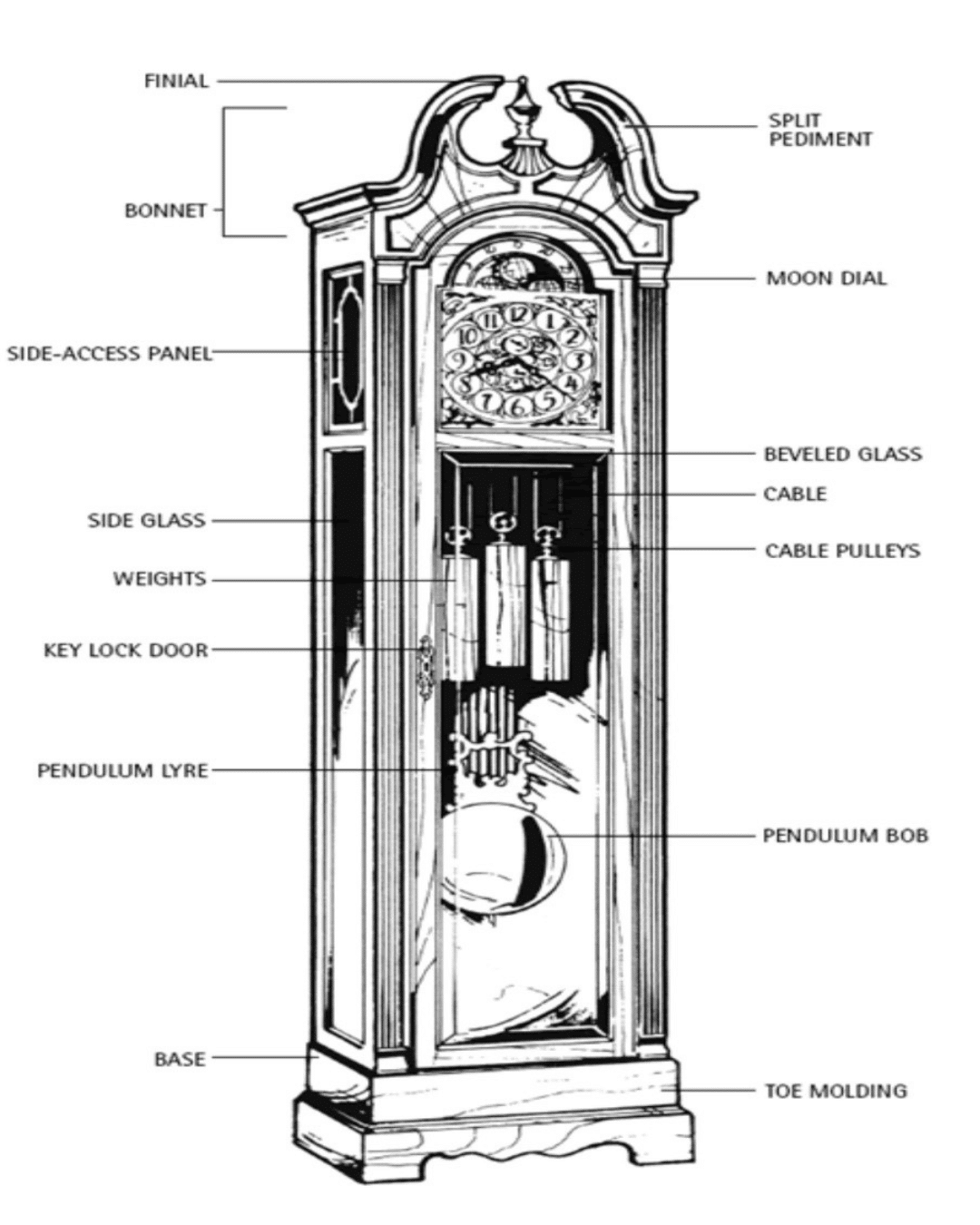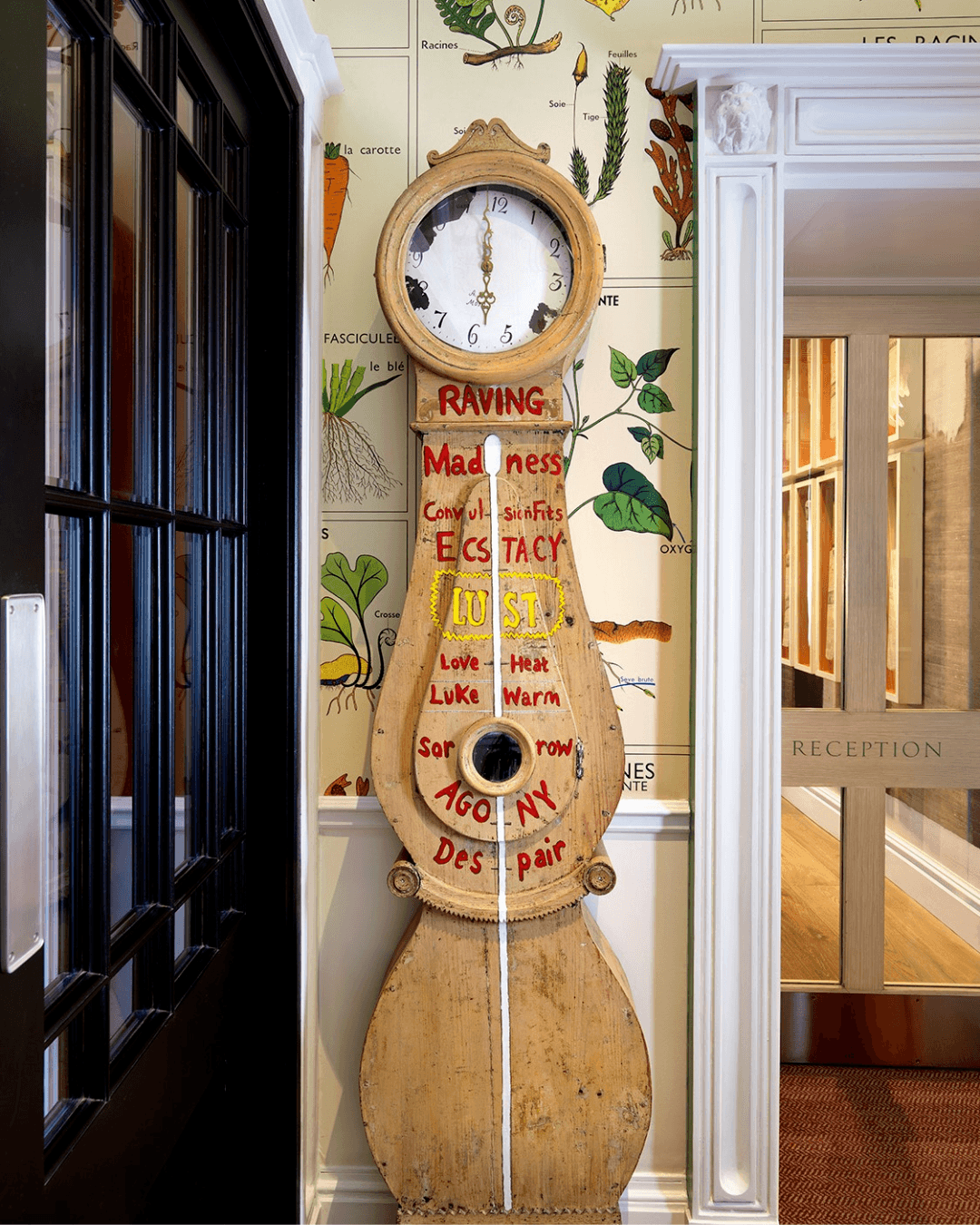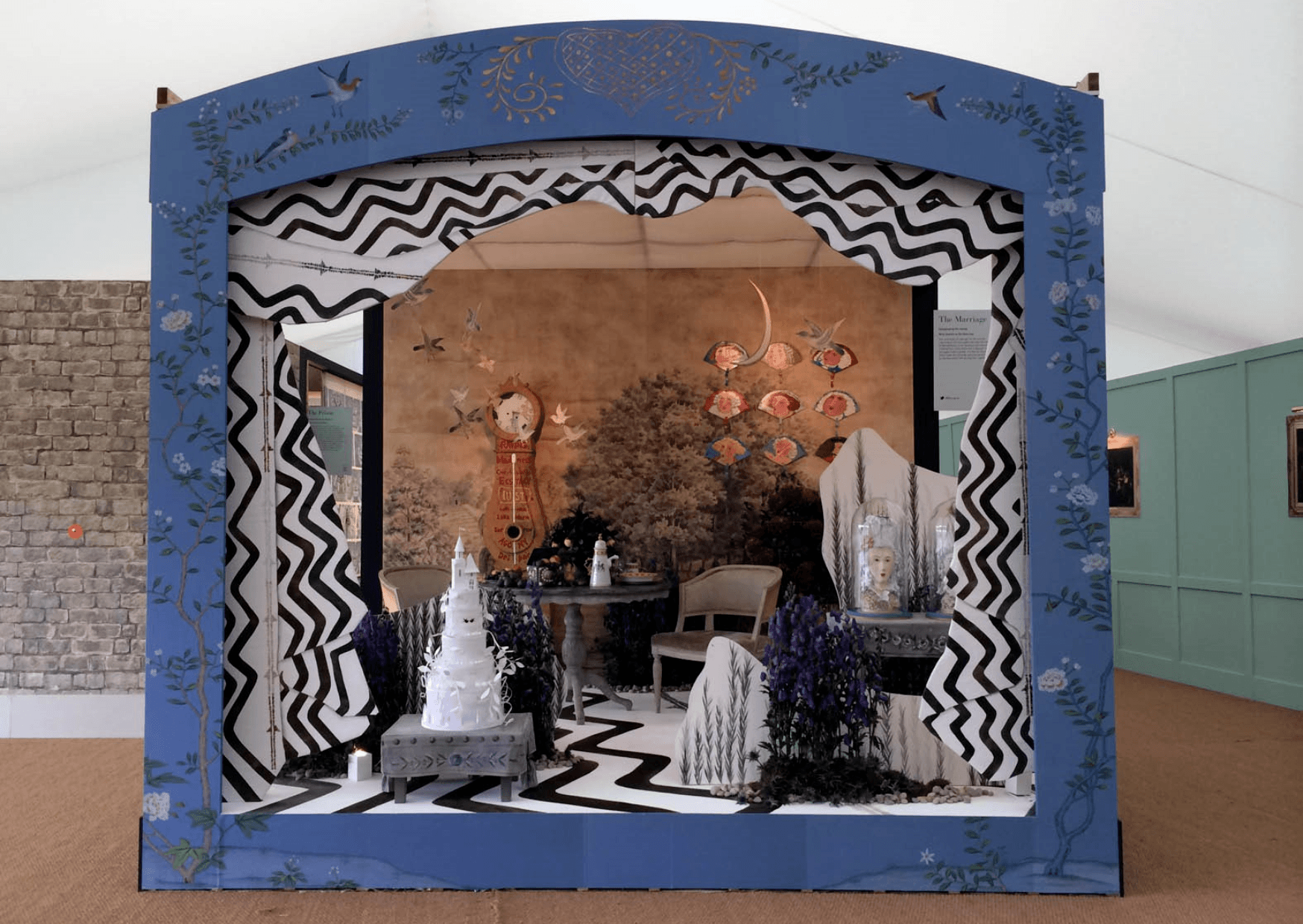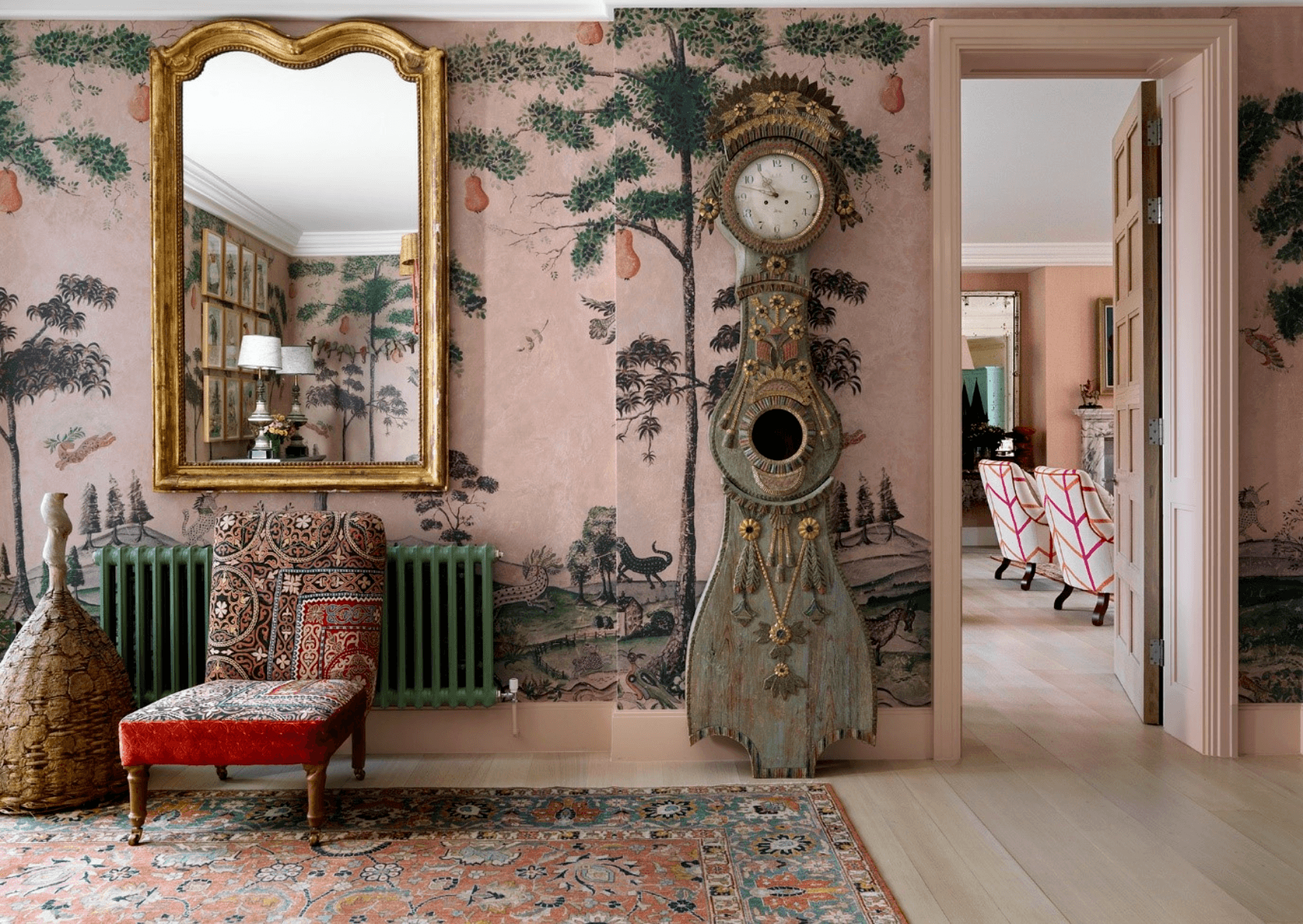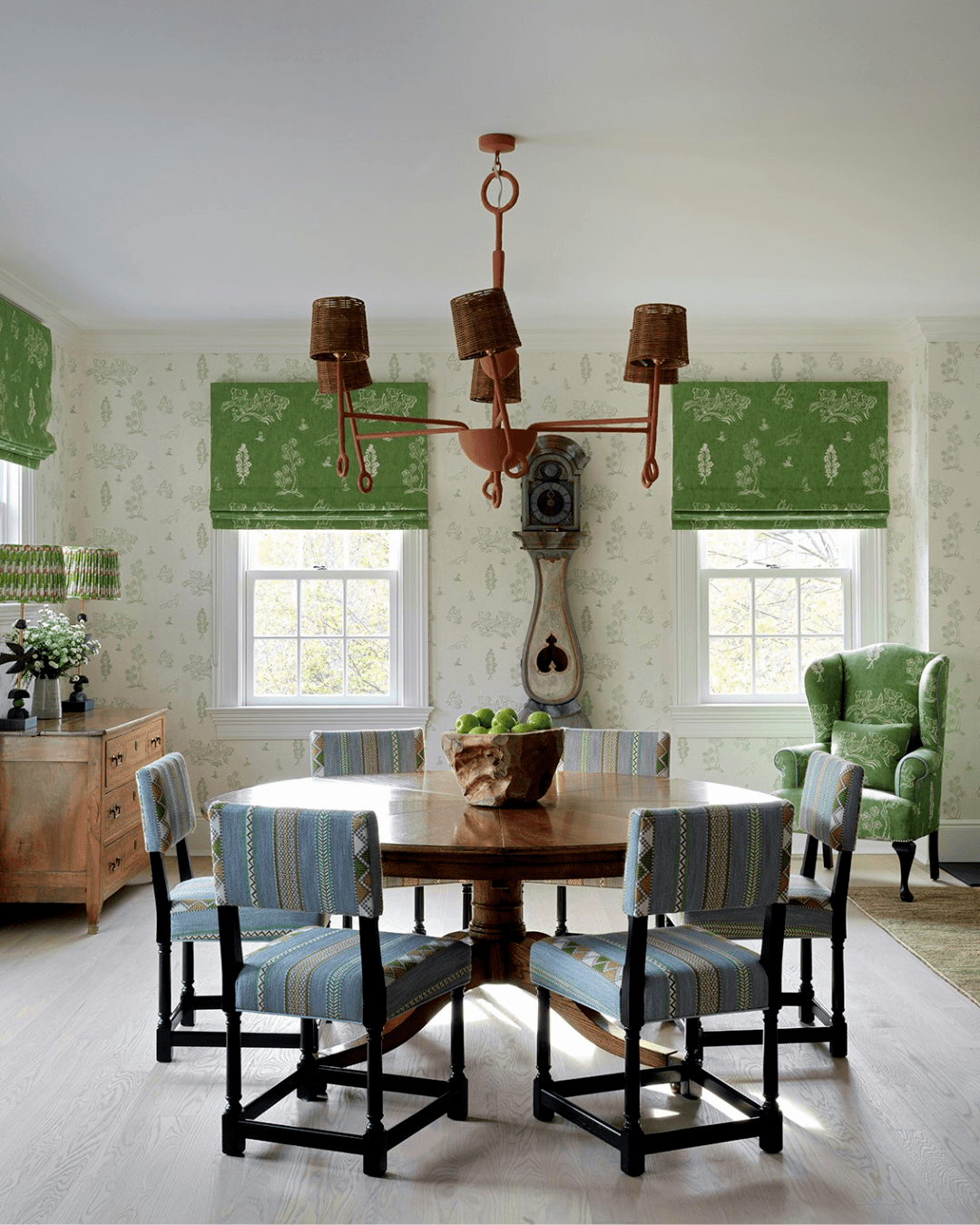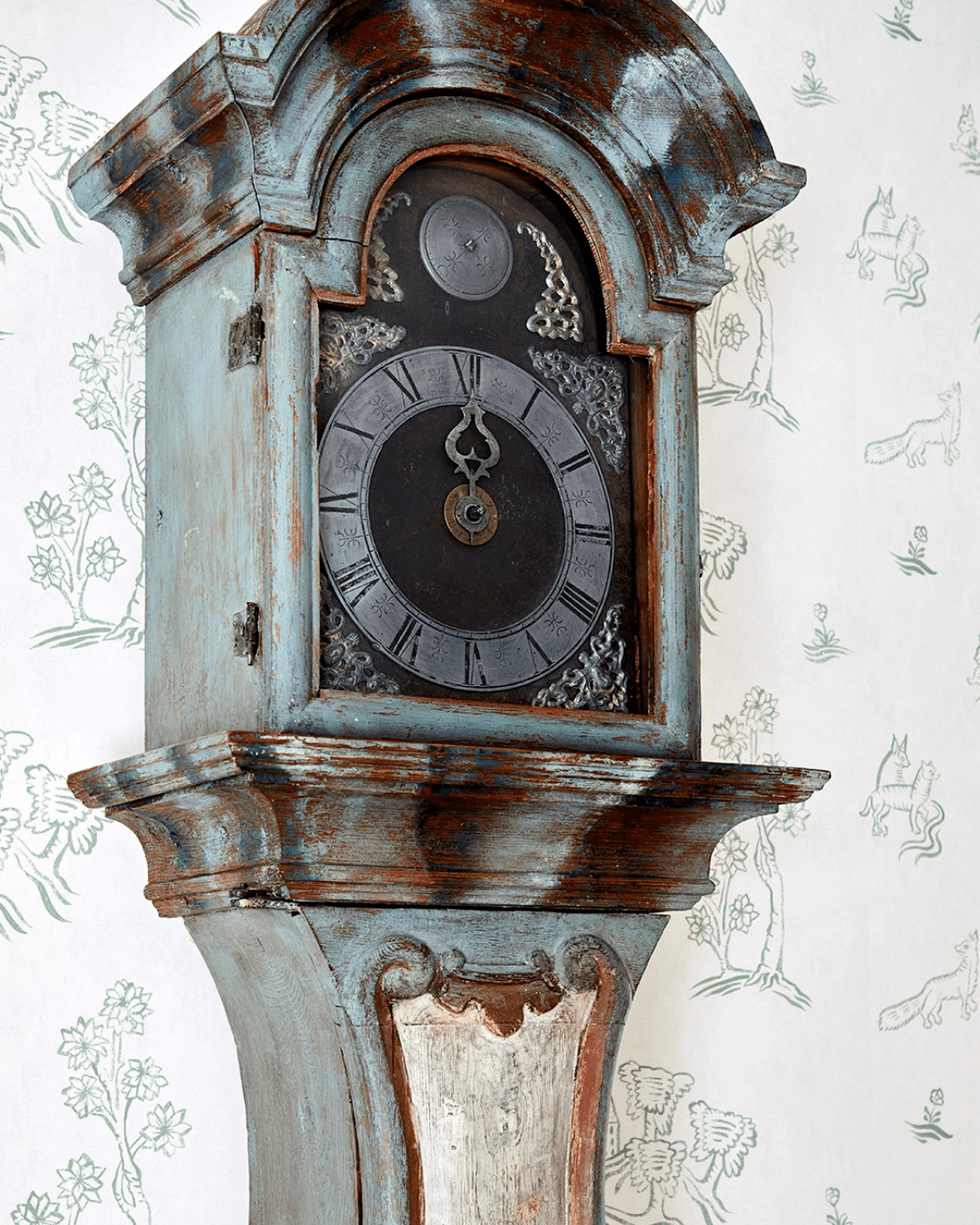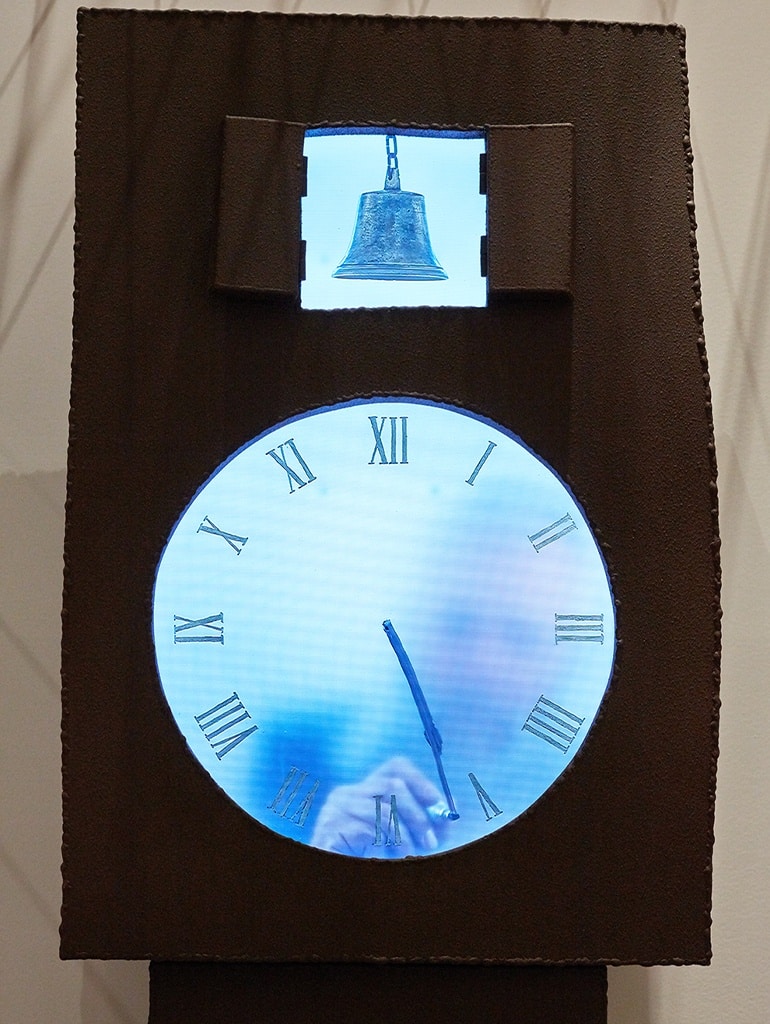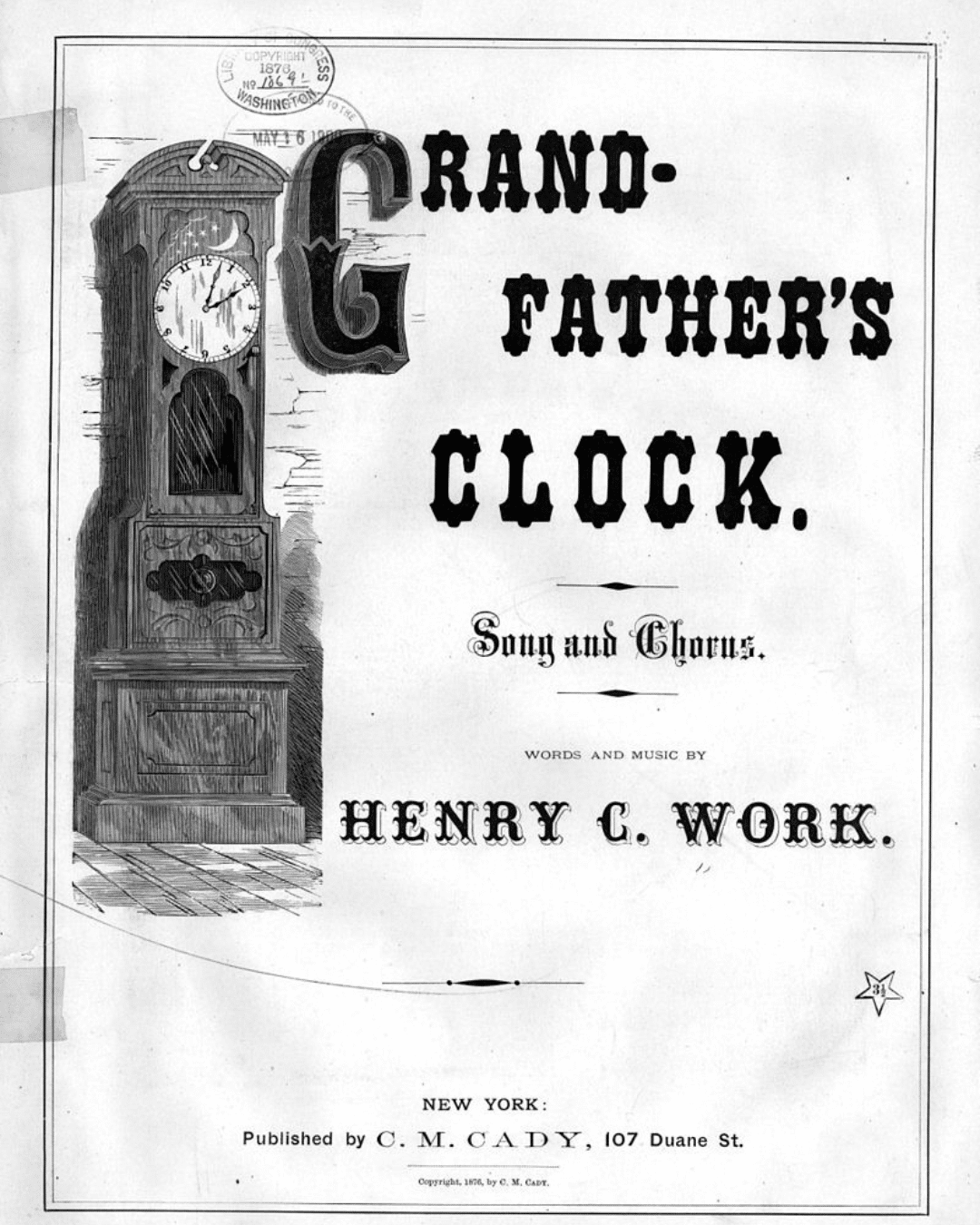Grandfather clocks date back to as early as 1670, when the first was made by the English clockmaker William Clement. They are typically tall and freestanding, run by a weight-driven pendulum which is concealed inside the lower tower. The pendulum swings back and forth by gravity, whilst weights inside the clock drop at a certain speed to power the hands on the clock. When the clock reaches a half hour, it chimes once and on the hour it chimes the number of hours – a stroke of mechanical genius!
Due to their amazing accuracy, up until the 20th century they were used as time standards for businesses and households. Today as technology has advanced, they are kept more for decorative purposes or antique value. We have sourced grandfather clocks for some of our hotels and residential projects as they bring an element of intrigue, craftsmanship and antiquity. We’d like to share a few of our favourite examples…
At Dorset Square Hotel, just outside the Drawing Room, is an antique grandfather clock. It was hand painted by our studio and our inspiration was David Hockney’s stage design for the Rake’s Project performed at Glyndebourne Festival Opera in 1975.
In another residential project a Mora grandfather clock has been sourced and placed in a prominent position between the windows and beside the fresh backdrop of our ‘Wychwood’ wallpaper which we designed for Andrew Martin. Its washed colour palette pairs well with the blue toned fabric on the dining chairs, helping to create balance in the room.
We originally unveiled our hand painted clock in 2014, when we designed a stand for Decorex. Here are some photos from our archive of the stand…
At The Whitby Hotel you can find a more modern take on the grandfather clock in the lobby. Designed by artist Maarten Baas, a grandfather can be seen inside the clock as a shaded figure rubbing out and redrawing the clock hands with a felt tip pen!
Did you know the name ‘grandfather clock’ only materialised when a song was written and released by Henry C. Work in 1876? Prior to this it was known as a longcase clock.
In the entrance of this home, lives a Scandinavian Mora grandfather clock. This is a true treasured find! With hand carved relief details and painted gilded iridescent qualities, its beauty catches your eye immediately. Mora clocks can be identified by their unique shape with rounded centres and soft colours.
Share your favourite designs for grandfather clocks with us on Instagram @KitKempDesignThread. We hope you’ve enjoyed exploring these examples!

